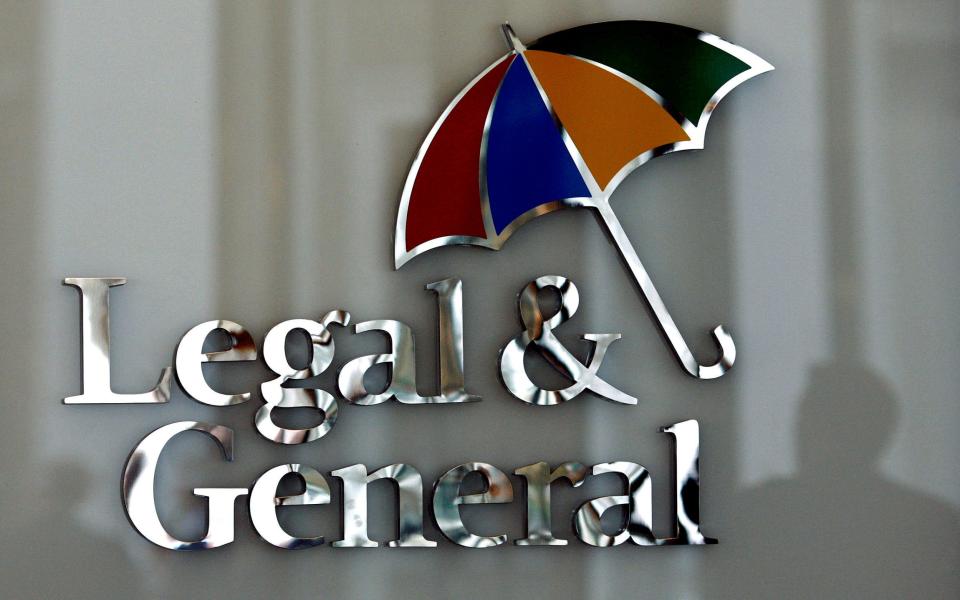This stock’s 9pc dividend yield is no red flag – keep buying

Extremely high dividend yields are often considered a red flag by income investors. In many cases they are assumed to indicate a company that is struggling to afford its payouts to shareholders and is therefore likely to cut its dividend before long.
As with all things in the investment world, though, there are exceptions.
Sometimes a high-quality company that can easily afford its dividend payments ends up trading at an unjustifiably low share price that causes its yield to spike to an unusually high level.
In such situations, this column believes the risk/reward opportunity for income investors is favourably skewed.
Legal & General is an obvious example. While the FTSE 100 yields 3.9pc, the diversified financial services firm has a yield of around 9pc. This is in spite of an excellent dividend record that is unmatched by many large companies.
It maintained dividend payments throughout the pandemic and has increased them at an annualised rate of 4.2pc over the past four years.
Its investors have thereby enjoyed above-inflation income growth, since price rises have averaged 3.5pc a year over the same period.
In its half-year results, released last month, the company raised its interim dividend by 5pc and said it planned to maintain this rate of growth through to next year. Since the Bank of England expects inflation to fall to below 3pc within a year, investors in the stock should experience a further real-terms rise in their income.

Legal & General’s dividend payouts are highly sustainable, as they were covered twice by profits last year. Its financial position is sound; its “solvency ratio” of 230pc is well in excess of regulatory requirements.
As a result, the chances of dividends being paid at their current, or higher, level over the coming years remain good.
This is in spite of the negative impact of 14 consecutive interest rate rises on the company’s investment management business. Higher interest rates have inevitably suppressed asset prices and contributed to a 10pc year-on-year decline in the amount of money L&G manages in the first half of the year.
However, with interest rate rises likely to abate and the world economy’s growth prospects likely to improve, the outlook for asset managers is increasingly upbeat.
Indeed, the company’s investment management operations could swing from acting as a drag on overall performance to being a key catalyst for its financial returns, and hence its share price, as its profitability is so closely linked to the fortunes of the stock market.
Higher interest rates have had a far more positive impact on L&G’s pension risk transfer business as they have contributed to a reduction in pension deficits and growing demand for insurance policies that provide pension schemes with a guarantee that retirement benefits will be paid.
Since only 15pc of Britain’s defined benefit pension liabilities have so far been transferred to insurers, there is significant scope for growth in this area.
Clearly, the forthcoming arrival of a new chief executive represents a sizeable risk for investors; the incumbent, Sir Nigel Wilson, has overseen sound financial performance for many years. A price-to-earnings ratio of just 5.6, though, suggests that investors have more than adequately factored in the potential for strategy changes and any short-term uncertainty that may accompany them.
Indeed, Legal & General’s valuation shows that it remains a highly unpopular stock. Its shares trade 13pc lower than when they were added to Questor’s Income Portfolio in 2017.
Dividends received or due to be paid since then amount to 49pc of our purchase price, which makes our total return roughly 36pc. None the less, negative capital returns more than six years after purchase represent a disappointing outcome for a company that is delivering sound financial performance.
When investors will warm to Legal & General is anyone’s guess.
But an extremely high yield and an exceptionally low valuation do not dovetail with a business that has a solid record of profitability, a sound financial position and clear long-term growth potential.
This column remains optimistic about the stock’s prospects and it remains a key holding in our income portfolio. Readers without a holding should consider a purchase.
Questor says: buy
Ticker: LGEN
Share price at close: 213.6p
Read the latest Questor column on telegraph.co.uk every Tuesday, Wednesday, Thursday and Friday from 6am
Read Questor’s rules of investment before you follow our tips


 Yahoo Finance
Yahoo Finance 